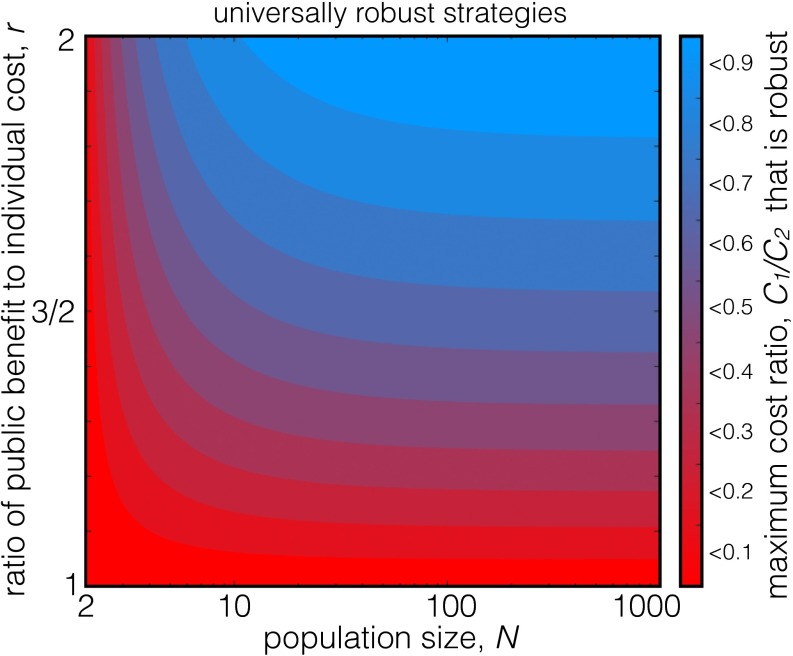Fig. 2.
When are simple two-choice strategies robust against all multichoice invaders in public goods games? We considered the evolutionary robustness of two-choice strategies, in which players iteratively choose to invest amount or to produce a public benefit B proportional to the total investment of both players, . Cooperative strategies limited to two investment choices can be evolutionary robust against all invaders, who may invest an arbitrary amount , provided the strategy has sufficient opportunity to punish a defector—that is, provided is sufficiently smaller than . We determined [2] the largest ratio of investment levels, , that permits universally robust cooperative two-choice strategies, as a function of the population size, N, and the public return on individual investment, r in the absence of discounting (). Colors are gradated in 10% intervals, so that the light blue region indicates a two-choice player can choose a strategy that maintains robust cooperation while engaging in relatively little punishment, by reducing her investment to only 90% of its maximum. The bright red region indicates that a two-choice player must have access to a high degree of punishment, much less than , to maintain cooperation and be robust against all invaders. As described in 3, the figure can alternatively be interpreted as the proportion of pairs of investment levels used by a d-choice player that produce a robust suboptimal fitness peak, and thus represents a lower bound on the “ruggedness” of the fitness landscape experienced by a population of d-choice players.

